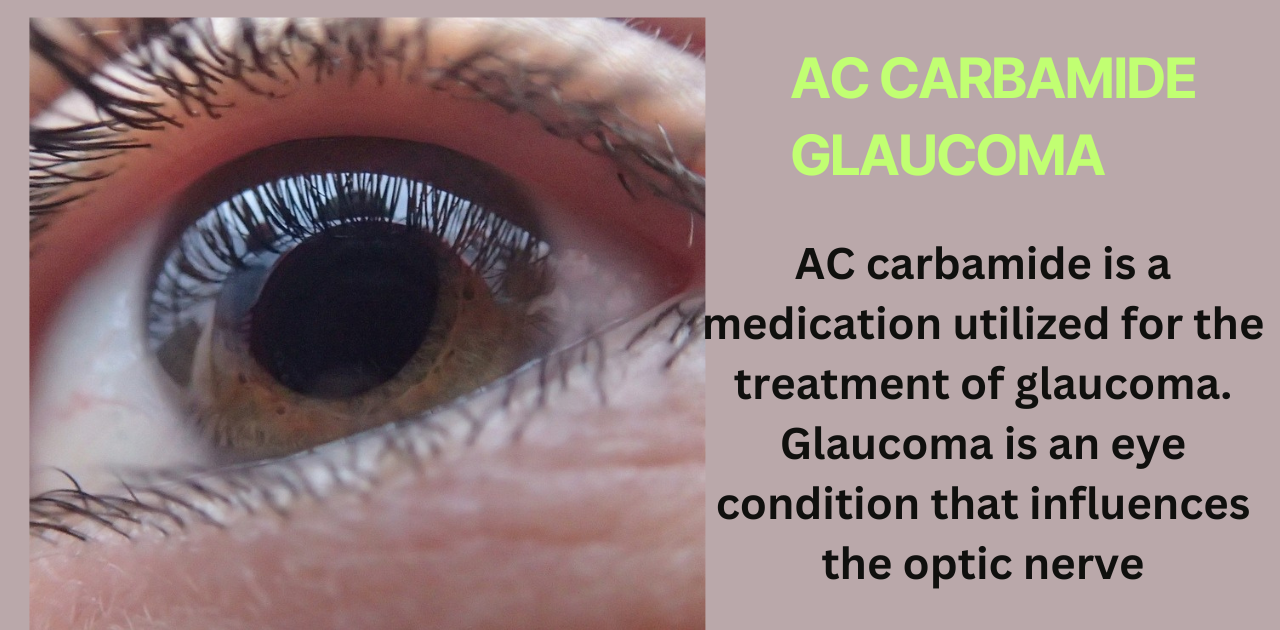Managing AC Carbamide Glaucoma and Treatment Options
Managing AC Carbamide Glaucoma, an eye disease impacting the optic nerve responsible for transmitting visual data to the central nervous system, can lead to vision loss if not treated appropriately. One effective treatment is AC carbamide, a medication that reduces fluid in the eye, thereby lowering intraocular pressure when used in conjunction with other prescriptions.

Understanding AC Carbamide
AC carbamide is available in the form of eye drops, directly applied to the eye. Adhering to your healthcare provider’s instructions on when to use this medication is crucial. Be aware of potential side effects, including redness, irritation, and itching of the eyes.
Lifestyle Changes for Glaucoma Management
In addition to medications, adopting a healthy lifestyle is vital for glaucoma control. This includes maintaining a nutritious diet, regular exercise, avoiding smoking and excessive alcohol consumption, and wearing protective eyewear when necessary.
Recognizing Glaucoma Symptoms
Early detection is challenging as glaucoma may not exhibit symptoms initially. However, as the disease progresses, common symptoms may include a slow loss of peripheral vision, tunnel vision, vision damage, coronas around lights, and even eye pain, nausea, and vomiting in severe cases.
General Management of AC Carbamide Glaucoma
Efficient management of AC carbamide glaucoma involves:
- Regular Eye Exams: Essential for early detection and monitoring.
- Medication Adherence: Strictly following prescribed medications to control intraocular pressure.
- Lifestyle Modifications: Adopting a healthy lifestyle with regular exercise and a balanced diet.
- Regular Monitoring: Tracking IOP, visual field progression, and optic nerve health through diagnostic tests.
Common Treatment Options
Treatment options vary based on the type and severity of glaucoma:
Medications:
- Prostaglandin Analogs: Increase aqueous humor outflow.
- Beta-blockers: Reduce aqueous humor production.
- Alpha Agonists: Decrease production and increase drainage.
- Carbonic Anhydrase Inhibitors: Reduce aqueous humor production.
Laser Therapy:
- Selective Laser Trabeculoplasty (SLT): Improves drainage.
- Laser Peripheral Iridotomy (LPI): Creates a hole for fluid drainage.
Surgery:
- Trabeculectomy: Creates a new drainage channel.
- Glaucoma Drainage Devices: Implantable devices for drainage.
Combination Therapies:
- Some cases may require a mix of medications, laser therapy, and/or surgery.
Conclusion
Taking a holistic approach to managing AC carbamide glaucoma involves medication, lifestyle changes, and regular monitoring. Coupled with prescribed medications, AC carbamide eye drops effectively reduce intraocular pressure. Embracing a healthy lifestyle further contributes to the overall well-being of individuals dealing with glaucoma.
Frequently Asked Questions:
- How do I use AC carbamide eye drops? AC carbamide eye drops should be used as directed by your healthcare provider, typically two to three times a day.
- What are the potential side effects of AC carbamide? Common side effects include itching, redness, and irritation of the eyes, along with dry eyes, sensitivity to light, and blurred vision.
- Can AC carbamide interact with other medications? AC carbamide may interact with other medications; consult your healthcare provider to avoid potential complications.
- How often do I need to see my healthcare provider for glaucoma? The frequency of appointments depends on the severity of glaucoma and treatment response, typically every six to twelve months.
- What glaucoma treatment options are available? Treatment options vary based on the type and stage of glaucoma, requiring personalized plans developed with an eye care specialist.




